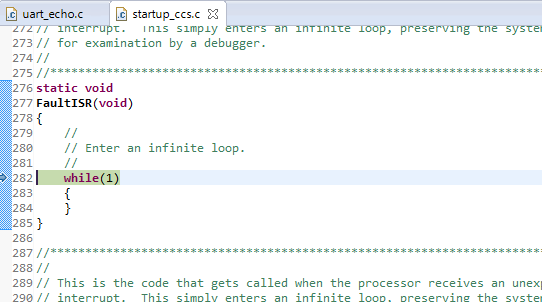Hi,
I am working with TM4C123GH6PM controller, I am new to this controller. I configured one uart 3 for serial communication with RX interrupt and that is working fine. And I configured one more UART 4 for RS485 communication with RX interrupt and RS485 enable is GPIO D0 pin.
1) data trasmit and receive some time working properly through UART 4. after that, control goes to Fault interrupt loop.
2) and also some times controller reset, after that interrupt is not working.
I donot know why this is happened.Kindly suggest me ragarding this.
Regards,
Sathish.


